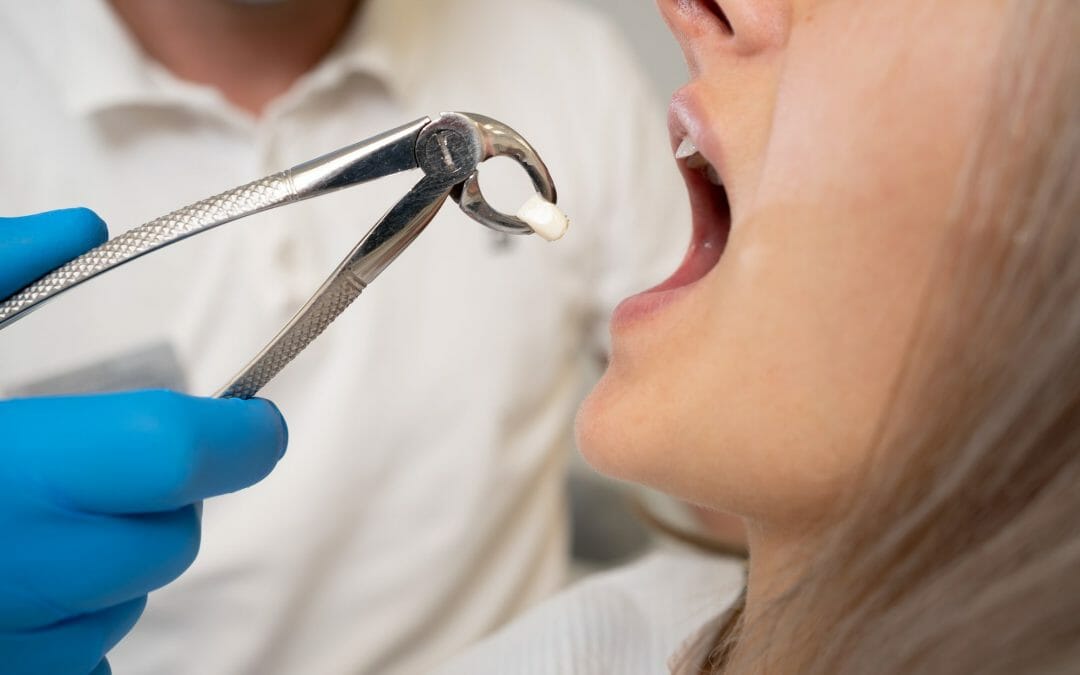What are the reasons for tooth extractions?
Tooth extractions are a common dental procedure that most of us have gone through at some point in our lives. It can be done for various reasons, such as tooth decay, gum disease, or overcrowding. Having a tooth pulled in adulthood is sometimes necessary. Getting a tooth pulled out can be daunting and worrying, but understanding the process and what to expect can help ease the anxiety. In this blog post, we will discuss everything you need to know about tooth extractions – from preparing for the procedure to detailed steps of the extraction process, possible risks associated with it, and recovery. By the end of this blog, you will have all the information handy to make an informed decision about your tooth extraction procedure.
The Need for Tooth Extraction
Tooth extractions may be necessary if a tooth is severely decayed or damaged beyond repair. Additionally, impacted wisdom teeth that cause pain or overcrowding may require extraction. In cases of advanced gum disease, extraction can prevent further infection, such as a deep infection in a tooth known as an abscess. Orthodontic treatment may also involve tooth extraction to create space for orthodontia and properly align the teeth. Furthermore, extraction may be necessary to remove teeth that block the eruption of permanent teeth.
Preparing for a Tooth Extraction
Before undergoing a tooth extraction procedure, your dentist will thoroughly examine your oral health, including taking X-rays to assess the tooth’s condition and surrounding structures. It is crucial to inform your dentist about any medications or medical conditions you have and any vitamins or supplements you’re taking. Depending on your specific case, your dentist may recommend antibiotics or other medications before the extraction. Be sure to follow any pre-operative instructions from your dentist, which may include fasting before the procedure.
Detailed Procedure of Tooth Extraction
Before beginning the extraction, your dentist will use a local anesthetic to numb the area, ensuring a pain-free procedure in the dental office. Dental instruments like forceps are then used to loosen the tooth carefully. Once the tooth is loosened, it is gently removed from the socket. In some cases, stitches may be required to close the extraction site. Your dentist will provide you with post-operative instructions to facilitate a smooth recovery. If you need a more complex tooth extraction, you may be given sedation so you are relaxed and asleep, as well as an anesthetic so you are pain-free. The surgeon may need to remove several teeth using the methods above.
Simple Extraction vs. surgical Extraction
When it comes to tooth extractions, there are two main types: simple extraction and surgical extraction. A simple extraction is performed on visible teeth that the dentist can easily access. On the other hand, surgical extraction is typically required for impacted or broken teeth that are not easily removable. This type of extraction may involve making an incision in the gum to access the tooth and may require specialized tools or bone removal for complex extractions. Your dentist will determine the type of extraction based on the tooth’s condition.
Recovery After Tooth Extraction
After tooth extraction, it is normal to experience some bleeding and swelling. Gauze may promote clot formation at the extraction site, helping to slow bleeding so a blood clot can form. Ice packs can be applied to reduce swelling, and pain medication should be prescribed as directed. Following a soft food diet and avoiding strenuous activities for a few days is essential. Don’t forget to attend follow-up appointments with your dentist to monitor the healing progress. Apply an ice bag to the affected area immediately after the procedure to keep down swelling. Apply ice for 10 minutes at a time.
How Long Does it Take to Recover from a Tooth Extraction Fully?
The recovery time after tooth extraction can vary, but it typically takes 7-10 days. The gum tissue will close and form a protective barrier during the initial healing process, which lasts about 1-2 weeks. However, complete healing of the extraction site can take several months. Proper oral hygiene practices and attending follow-up appointments are crucial for a successful recovery. Contact your dentist for further guidance if you experience any unusual symptoms or complications. If you’re planning on replacing the tooth with a dental implant, you’ll probably need to wait a few months to allow for full recovery. If you are experiencing pain that isn’t going away after several days or signs of an infection — such as fever, pain, and pus or drainage from the incision — make an appointment to see your dentist as soon as possible.
Conclusion
Tooth extraction is a standard dental procedure that may be necessary for various reasons, such as severe tooth decay, overcrowding, or impaction. The tooth extraction process involves carefully removing the tooth from its socket in the jawbone. It is essential to follow proper aftercare instructions to ensure a smooth recovery. You may experience some discomfort and swelling in the days following the extraction, but these symptoms should gradually improve. Be sure to take any prescribed medications and avoid strenuous activities that could disrupt the healing process. Remember to maintain good oral hygiene and follow up with your dentist if you have concerns. You should fully recover from a tooth extraction within a few weeks with proper care. To learn more about tooth extractions and other dental procedures, visit our website or schedule an appointment with the Dentistry of West Bend today.


Recent Comments